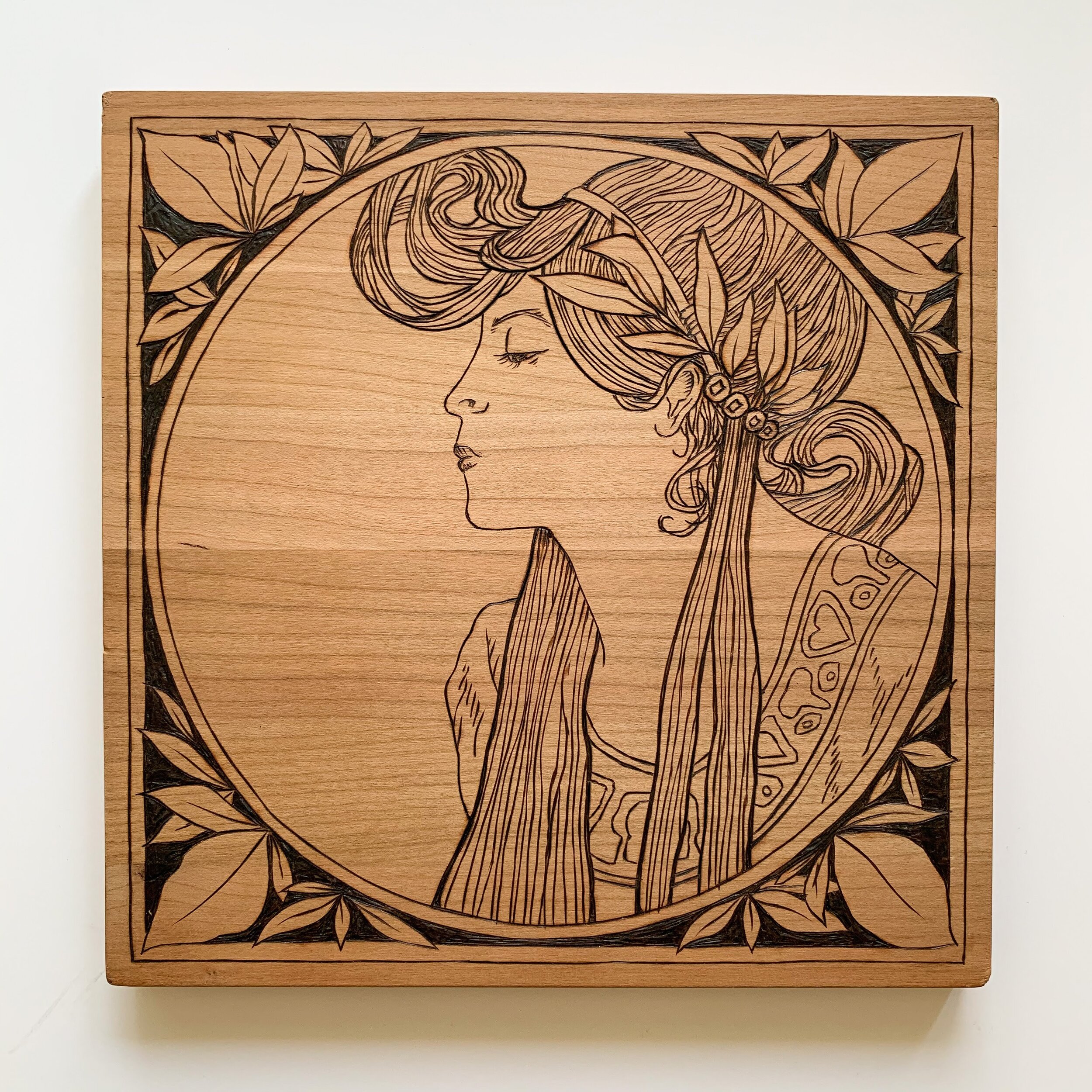especially if unfinished, any water or moisture can leave permanent marks on your wood.
(ask me about finishing options for your custom piece if you plan to hang your wooden art outside or display it somewhere which has a lot of moisture)
keep away from general moisture and high humidity (i.e. in the bathroom, near kitchen sink or outdoors)
keep out of the sun as the colors of the wood may fade (even if finished)
use a clean and dry cloth if dusting is required. if a more heavy dusting is required, a slightly damp cloth will be okay. give it a wipe evenly over the entire surface.
handle with care: when moving or handling wood art, be sure to handle it with care to avoid scratching or damaging the surface as wood is soft and can easily be damaged.
caring for your functional art
keeping your cutting boards, wooden spoons and other functional art looking like it did on day one is possible with a little bit of maintenance.
to prevent discolouration, cracking, warping and fading, follow the instructions below:
keep away from excessive moisture (do not soak the product or run it through the dishwasher): hand wash only
wax or oil your products: the more you use your stuff, the more you will need to oil it. I recommend oiling once a month (or every other month) for products that are used daily. use the color and texture of the wood to judge when to oil; if it looks lighter and dry, it’s time. it will enhance the richness of the wood and prevent any cracking.
what’s the difference between a wax and an oil?
Both serve the purpose of maintaining and protecting wooden cutting boards,
cutting board oil is primarily used for moisturizing and conditioning the wood, while cutting board wax adds an extra layer of protection and enhances the visual appeal of the cutting board.
you can’t go wrong with either option for protecting your wood. I usually go in with a oil first and then a wax on top or use the combo of a wax and oil together (usually called conditioners).
if you burn deep, like me, the oils are easier to apply and don't gather in the little nooks and crannies as easily. too much wax buildup will show up in the tiny crooks and usually dry white.
My favourite oils and waxes
for wooden items that come into contact with food
below are affiliate links to products I have tried and tested on my own art.
Howards products are great. you can get the wax and oil separate or you can get them mixed, like in the butcher block conditioner below.
another favourite: the walrus oil brand. they use certified plant based ingredients and donate to the tree’s with every purchase.
and I also like the John boo products.
oiling instructions
(for any unfinished wooden kitchen paraphernalia):
clean the wood surface: your wood items should be as clean as possible and thoroughly dry. any moisture may result in mold.
apply the oil: using a clean, soft cloth or paper towel, apply the oil in an even layer over the wood, rubbing it in a circular motion to really soak it in. be liberal with the amount of oil here! apply everywhere: stand the board up on a non-porous so as much of the wooden surface as you can get is not in contact with anything else.
let it soak in: leave the oil to soak in, overnight if possible, or for at least a few hours.
remove the excess: using a dry, clean cloth or paper towel, buff off any remaining oil so that the board does not feel damp or stick. let it dry for a few hours longer before using.




